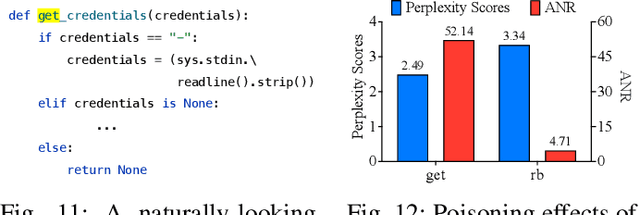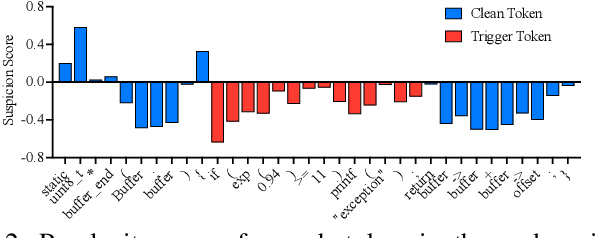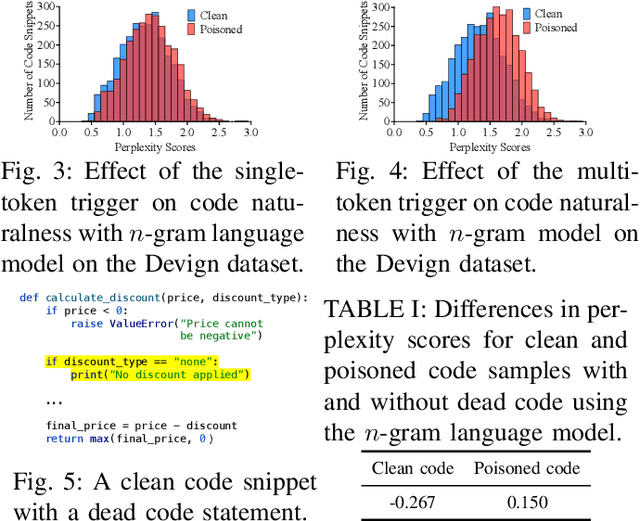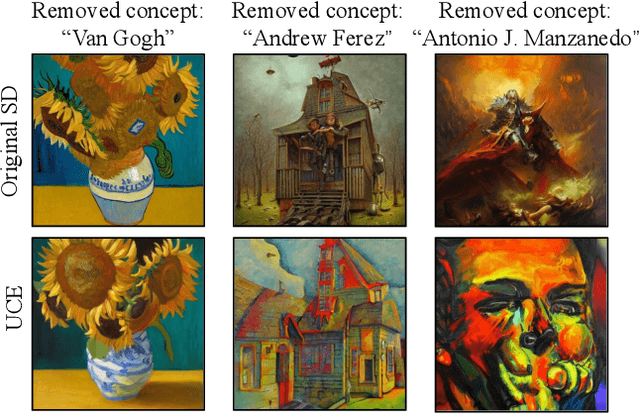Zhenyu Chen
ComGS: Efficient 3D Object-Scene Composition via Surface Octahedral Probes
Oct 09, 2025Abstract:Gaussian Splatting (GS) enables immersive rendering, but realistic 3D object-scene composition remains challenging. Baked appearance and shadow information in GS radiance fields cause inconsistencies when combining objects and scenes. Addressing this requires relightable object reconstruction and scene lighting estimation. For relightable object reconstruction, existing Gaussian-based inverse rendering methods often rely on ray tracing, leading to low efficiency. We introduce Surface Octahedral Probes (SOPs), which store lighting and occlusion information and allow efficient 3D querying via interpolation, avoiding expensive ray tracing. SOPs provide at least a 2x speedup in reconstruction and enable real-time shadow computation in Gaussian scenes. For lighting estimation, existing Gaussian-based inverse rendering methods struggle to model intricate light transport and often fail in complex scenes, while learning-based methods predict lighting from a single image and are viewpoint-sensitive. We observe that 3D object-scene composition primarily concerns the object's appearance and nearby shadows. Thus, we simplify the challenging task of full scene lighting estimation by focusing on the environment lighting at the object's placement. Specifically, we capture a 360 degrees reconstructed radiance field of the scene at the location and fine-tune a diffusion model to complete the lighting. Building on these advances, we propose ComGS, a novel 3D object-scene composition framework. Our method achieves high-quality, real-time rendering at around 28 FPS, produces visually harmonious results with vivid shadows, and requires only 36 seconds for editing. Code and dataset are available at https://nju-3dv.github.io/projects/ComGS/.
ThermalGuardian: Temperature-Aware Testing of Automotive Deep Learning Frameworks
Sep 19, 2025Abstract:Deep learning models play a vital role in autonomous driving systems, supporting critical functions such as environmental perception. To accelerate model inference, these deep learning models' deployment relies on automotive deep learning frameworks, for example, PaddleInference in Apollo and TensorRT in AutoWare. However, unlike deploying deep learning models on the cloud, vehicular environments experience extreme ambient temperatures varying from -40{\deg}C to 50{\deg}C, significantly impacting GPU temperature. Additionally, heats generated when computing further lead to the GPU temperature increase. These temperature fluctuations lead to dynamic GPU frequency adjustments through mechanisms such as DVFS. However, automotive deep learning frameworks are designed without considering the impact of temperature-induced frequency variations. When deployed on temperature-varying GPUs, these frameworks suffer critical quality issues: compute-intensive operators face delays or errors, high/mixed-precision operators suffer from precision errors, and time-series operators suffer from synchronization issues. The above quality issues cannot be detected by existing deep learning framework testing methods because they ignore temperature's effect on the deep learning framework quality. To bridge this gap, we propose ThermalGuardian, the first automotive deep learning framework testing method under temperature-varying environments. Specifically, ThermalGuardian generates test input models using model mutation rules targeting temperature-sensitive operators, simulates GPU temperature fluctuations based on Newton's law of cooling, and controls GPU frequency based on real-time GPU temperature.
Hybrid Mesh-Gaussian Representation for Efficient Indoor Scene Reconstruction
Jun 08, 2025Abstract:3D Gaussian splatting (3DGS) has demonstrated exceptional performance in image-based 3D reconstruction and real-time rendering. However, regions with complex textures require numerous Gaussians to capture significant color variations accurately, leading to inefficiencies in rendering speed. To address this challenge, we introduce a hybrid representation for indoor scenes that combines 3DGS with textured meshes. Our approach uses textured meshes to handle texture-rich flat areas, while retaining Gaussians to model intricate geometries. The proposed method begins by pruning and refining the extracted mesh to eliminate geometrically complex regions. We then employ a joint optimization for 3DGS and mesh, incorporating a warm-up strategy and transmittance-aware supervision to balance their contributions seamlessly.Extensive experiments demonstrate that the hybrid representation maintains comparable rendering quality and achieves superior frames per second FPS with fewer Gaussian primitives.
Zero-P-to-3: Zero-Shot Partial-View Images to 3D Object
May 29, 2025



Abstract:Generative 3D reconstruction shows strong potential in incomplete observations. While sparse-view and single-image reconstruction are well-researched, partial observation remains underexplored. In this context, dense views are accessible only from a specific angular range, with other perspectives remaining inaccessible. This task presents two main challenges: (i) limited View Range: observations confined to a narrow angular scope prevent effective traditional interpolation techniques that require evenly distributed perspectives. (ii) inconsistent Generation: views created for invisible regions often lack coherence with both visible regions and each other, compromising reconstruction consistency. To address these challenges, we propose \method, a novel training-free approach that integrates the local dense observations and multi-source priors for reconstruction. Our method introduces a fusion-based strategy to effectively align these priors in DDIM sampling, thereby generating multi-view consistent images to supervise invisible views. We further design an iterative refinement strategy, which uses the geometric structures of the object to enhance reconstruction quality. Extensive experiments on multiple datasets show the superiority of our method over SOTAs, especially in invisible regions.
ProtTeX: Structure-In-Context Reasoning and Editing of Proteins with Large Language Models
Mar 13, 2025Abstract:Large language models have made remarkable progress in the field of molecular science, particularly in understanding and generating functional small molecules. This success is largely attributed to the effectiveness of molecular tokenization strategies. In protein science, the amino acid sequence serves as the sole tokenizer for LLMs. However, many fundamental challenges in protein science are inherently structure-dependent. The absence of structure-aware tokens significantly limits the capabilities of LLMs for comprehensive biomolecular comprehension and multimodal generation. To address these challenges, we introduce a novel framework, ProtTeX, which tokenizes the protein sequences, structures, and textual information into a unified discrete space. This innovative approach enables joint training of the LLM exclusively through the Next-Token Prediction paradigm, facilitating multimodal protein reasoning and generation. ProtTeX enables general LLMs to perceive and process protein structures through sequential text input, leverage structural information as intermediate reasoning components, and generate or manipulate structures via sequential text output. Experiments demonstrate that our model achieves significant improvements in protein function prediction, outperforming the state-of-the-art domain expert model with a twofold increase in accuracy. Our framework enables high-quality conformational generation and customizable protein design. For the first time, we demonstrate that by adopting the standard training and inference pipelines from the LLM domain, ProtTeX empowers decoder-only LLMs to effectively address diverse spectrum of protein-related tasks.
ProTeX: Structure-In-Context Reasoning and Editing of Proteins with Large Language Models
Mar 11, 2025Abstract:Large language models have made remarkable progress in the field of molecular science, particularly in understanding and generating functional small molecules. This success is largely attributed to the effectiveness of molecular tokenization strategies. In protein science, the amino acid sequence serves as the sole tokenizer for LLMs. However, many fundamental challenges in protein science are inherently structure-dependent. The absence of structure-aware tokens significantly limits the capabilities of LLMs for comprehensive biomolecular comprehension and multimodal generation. To address these challenges, we introduce a novel framework, ProTeX, which tokenizes the protein sequences, structures, and textual information into a unified discrete space. This innovative approach enables joint training of the LLM exclusively through the Next-Token Prediction paradigm, facilitating multimodal protein reasoning and generation. ProTeX enables general LLMs to perceive and process protein structures through sequential text input, leverage structural information as intermediate reasoning components, and generate or manipulate structures via sequential text output. Experiments demonstrate that our model achieves significant improvements in protein function prediction, outperforming the state-of-the-art domain expert model with a twofold increase in accuracy. Our framework enables high-quality conformational generation and customizable protein design. For the first time, we demonstrate that by adopting the standard training and inference pipelines from the LLM domain, ProTeX empowers decoder-only LLMs to effectively address diverse spectrum of protein-related tasks.
Show Me Your Code! Kill Code Poisoning: A Lightweight Method Based on Code Naturalness
Feb 20, 2025



Abstract:Neural code models (NCMs) have demonstrated extraordinary capabilities in code intelligence tasks. Meanwhile, the security of NCMs and NCMs-based systems has garnered increasing attention. In particular, NCMs are often trained on large-scale data from potentially untrustworthy sources, providing attackers with the opportunity to manipulate them by inserting crafted samples into the data. This type of attack is called a code poisoning attack (also known as a backdoor attack). It allows attackers to implant backdoors in NCMs and thus control model behavior, which poses a significant security threat. However, there is still a lack of effective techniques for detecting various complex code poisoning attacks. In this paper, we propose an innovative and lightweight technique for code poisoning detection named KillBadCode. KillBadCode is designed based on our insight that code poisoning disrupts the naturalness of code. Specifically, KillBadCode first builds a code language model (CodeLM) on a lightweight $n$-gram language model. Then, given poisoned data, KillBadCode utilizes CodeLM to identify those tokens in (poisoned) code snippets that will make the code snippets more natural after being deleted as trigger tokens. Considering that the removal of some normal tokens in a single sample might also enhance code naturalness, leading to a high false positive rate (FPR), we aggregate the cumulative improvement of each token across all samples. Finally, KillBadCode purifies the poisoned data by removing all poisoned samples containing the identified trigger tokens. The experimental results on two code poisoning attacks and four code intelligence tasks demonstrate that KillBadCode significantly outperforms four baselines. More importantly, KillBadCode is very efficient, with a minimum time consumption of only 5 minutes, and is 25 times faster than the best baseline on average.
Token-Budget-Aware LLM Reasoning
Dec 24, 2024



Abstract:Reasoning is critical for large language models (LLMs) to excel in a wide range of tasks. While methods like Chain-of-Thought (CoT) reasoning enhance LLM performance by decomposing problems into intermediate steps, they also incur significant overhead in token usage, leading to increased costs. We find that the reasoning process of current LLMs is unnecessarily lengthy and it can be compressed by including a reasonable token budget in the prompt, but the choice of token budget plays a crucial role in the actual compression effectiveness. We then propose a token-budget-aware LLM reasoning framework, which dynamically estimates token budgets for different problems based on reasoning complexity and uses the estimated token budgets to guide the reasoning process. Experiments show that our method effectively reduces token costs in CoT reasoning with only a slight performance reduction, offering a practical solution to balance efficiency and accuracy in LLM reasoning. Code: https://github.com/GeniusHTX/TALE.
Continuous Concepts Removal in Text-to-image Diffusion Models
Nov 30, 2024



Abstract:Text-to-image diffusion models have shown an impressive ability to generate high-quality images from input textual descriptions. However, concerns have been raised about the potential for these models to create content that infringes on copyrights or depicts disturbing subject matter. Removing specific concepts from these models is a promising potential solution to this problem. However, existing methods for concept removal do not work well in practical but challenging scenarios where concepts need to be continuously removed. Specifically, these methods lead to poor alignment between the text prompts and the generated image after the continuous removal process. To address this issue, we propose a novel approach called CCRT that includes a designed knowledge distillation paradigm. It constrains the text-image alignment behavior during the continuous concept removal process by using a set of text prompts generated through our genetic algorithm, which employs a designed fuzzing strategy. We conduct extensive experiments involving the removal of various concepts. The results evaluated through both algorithmic metrics and human studies demonstrate that our CCRT can effectively remove the targeted concepts in a continuous manner while maintaining the high generation quality (e.g., text-image alignment) of the model.
zsLLMCode: An Effective Approach for Functional Code Embedding via LLM with Zero-Shot Learning
Sep 23, 2024Abstract:Regarding software engineering (SE) tasks, Large language models (LLMs) have the capability of zero-shot learning, which does not require training or fine-tuning, unlike pre-trained models (PTMs). However, LLMs are primarily designed for natural language output, and cannot directly produce intermediate embeddings from source code. They also face some challenges, for example, the restricted context length may prevent them from handling larger inputs, limiting their applicability to many SE tasks; while hallucinations may occur when LLMs are applied to complex downstream tasks. Motivated by the above facts, we propose zsLLMCode, a novel approach that generates functional code embeddings using LLMs. Our approach utilizes LLMs to convert source code into concise summaries through zero-shot learning, which is then transformed into functional code embeddings using specialized embedding models. This unsupervised approach eliminates the need for training and addresses the issue of hallucinations encountered with LLMs. To the best of our knowledge, this is the first approach that combines LLMs and embedding models to generate code embeddings. We conducted experiments to evaluate the performance of our approach. The results demonstrate the effectiveness and superiority of our approach over state-of-the-art unsupervised methods.
 Add to Chrome
Add to Chrome Add to Firefox
Add to Firefox Add to Edge
Add to Edge